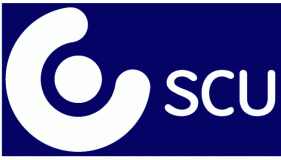Blog Archives
SynBio – in need of public engagement
In a recent book review for JCOM, I outlined a few of the ethical, social and legal issues that make synthetic biology a potentially fascinating topic from a public engagement perspective. ‘Synthetic Biology Analysed’ (Englehard, 2016) draws together contributions from experts in ethics, law, risk analysis and sociology. In doing so, it provides a fairly accessible discussion of the nature of synthetic biology – what the field encompasses and how we might think about different types of synthetic biology (from those that are essentially developments of genetic engineering to approaches that incorporate non-naturally occurring nucleotides (components of DNA)). These raise different challenges when it comes to assessing risk, for example to the environment, posed by these developments.
Shortly after reading Englehard’s (2016) book, I had the opportunity to explore synthetic biology further, through a participatory theatre project – Invincible – initiated by the University of Bristol’s SynBio group and produced by Kilter theatre company. Both Englehard’s book and ‘Invincible’ the theatre production point to a need for public engagement in this area.
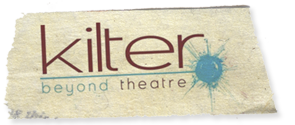
Speaking to the members of the Invincible production team, I learned much about the process of developing this work and the learning curve that had to be climbed in order to understand the research. Kilter were also keen to address other STEM issues, such as presenting women as scientists to counter gender stereotypes.
One aspect of the performance I found particularly refreshing was the way that actual researchers were included. They may not have had ‘acting’ roles, but they were present throughout and engaged in discussion with the audience at the end of the performance (when their presence was revealed). Their inclusion, and the setting of the performances in a flat both worked to highlight the pervasiveness of science in our lives.
In a chapter focusing specifically on public engagement in Synthetic Biology Analysed, Pardo and Hagen point out the low salience of synthetic biology with the public. While this is not uncommon, with many scientific topics taking place silently and behind closed doors, the potential impacts (social and environmental) of synthetic biology highlighted in Englehard’s book suggest it is time for a public discussion. It is nice to see that University of Bristol’s SynBio group are beginning to hold this conversation.
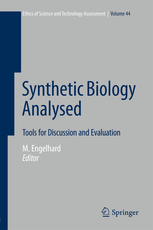
ENGELHARD, M. ED. (2016). SYNTHETIC BIOLOGY ANALYSED: TOOLS FOR DISCUSSION AND EVALUATION. SPRINGER INTERNATIONAL.
Emma Weitkamp
New and notable – further selected publications from the Science Communication Unit
Last week we posted details of our work on environmental policy publications as well as our research on outreach and informal learning. This week’s blog highlights our work in public engagement with robotics and robot ethics, as well as our work on science communication in wider cultural areas, including film, theatre and festivals. We also revisit the controversial issue of ‘fun’ in science communication.
Robot Ethics
Winfield, A. F. (2016) Written evidence submitted to the UK Parliamentary Select Committee on Science and Technology Inquiry on Robotics and Artificial Intelligence. Discussion Paper. Science and Technology Committee (Commons), Website. Available from: http://eprints.uwe.ac.uk/29428
This is a slightly unusual publication; here Professor Alan Winfield tells the story behind it. In March 2016 the UK Parliamentary Select Committee on Science and Technology opened an inquiry on Robotics and Autonomous Systems they posed four questions; the fourth of which held the greatest interest for me: The social, legal and ethical issues raised by developments in robotics and artificial intelligence technologies, and how they should be addressed? Then, in April, I was contacted by the EPSRC RAS UK network and asked if I could draft a response to this question to then form part of their response to the inquiry. This I did, but of course because of the word limit on overall responses, my contribution to the RAS UK submission was, inevitably, very abbreviated. I was also asked by Phil Nelson, CEO of EPSRC, to brief him prior to his oral evidence to the inquiry, which I was happy to do. Following the first oral evidence session I then wrote to the Nicola Blackwood MP, (then) chair of the Select Committee. In response the committee asked if they could publish my full evidence, which of course I was very happy for them to do. My full evidence was published on the committee web pages on 7 June. To compete the story the inquiry published its full report on 13 September 2016, and I was very pleased to find myself quoted in that report. I was equally pleased to see one of my recommendations – that a commission be set up – appear in the recommendations of the final report; of course other evidence made the same recommendation, but I hope my evidence helped!
Our public engagement projects also influence research as this paper by the Eurathlon consortium shows. The paper reports on the advancement of the field of robotics achieved through the Eurathlon competition:
Winfield, A. F., Franco, M. P., Brueggemann, B., Castro, A., Limon, M. C., Ferri, G., Ferreira, F., Liu, X., Petillot, Y., Roning, J., Schneider, F., Stengler, E., Sosa, D. and Viguria, A. (2016) euRathlon 2015: A multi-domain multi-robot grand challenge for search and rescue robots. In: Alboul, L., Damian, D. and Aitken, J. M., eds. (2016) Towards Autonomous Robotic Systems. (9716) Springer, pp. 351-363. Available from: http://eprints.uwe.ac.uk/29283
“Fun” in science communication
The following two publications are the same text published in two different books (with permission). The chapters summarise the views of the authors, including our own Dr Erik Stengler, about the use of fun in science communication, and specifically in science centres.
Viladot, P., Stengler, E. and Fernández, G. (2016) From fun science to seductive science. In: Kiraly, A. and Tel, T., eds. (2016) Teaching Physics Innovatively 2015. ELTE University. ISBN 9789632848150 Available from: http://eprints.uwe.ac.uk/27793
Viladot, P., Stengler, E. and Fernández, G. (2016) From “fun science” to seductive science. In: Franche, C., ed. (2016) Spokes Panorama 2015. ECSITE, pp. 53-65. Available from: http://eprints.uwe.ac.uk/29105
Both of these are related to a rather controversial blogpost hosted on the SCU blog. That post was selected for publication in a book that captures a collection of thought-provoking blog posts from the Museum field all over the world. In it Erik expressed in a more informal and provocative manner the ideas in the above papers.
Stengler, E. (2016) Science communicators need to get it: Science isn’t fun. In: Farnell, G., ed. (2016) The Museums Blog Book. MuseumsEtc. [In Press] Available from: http://eprints.uwe.ac.uk/30360
Science communication through wider cultural activities
A recent commentary explores the factors that contribute to festival goers’ choice to attend science-based events at a summer cultural festival. Presented with a huge variety of interesting cultural events, attendances at science-based events were strong, with high levels of enjoyment and engagement with scientists and other speakers. Our research found out that audiences saw science not as something distinct from “cultural” events but as just another option: Science was culture.
Sardo, A.M. and Grand, A., 2016. “Science in culture: audiences’ perspective on engaging with science at a summer festival”. Science Communication Vol. 38(2) 251–260.
This is a paper on science communication through online videos, long awaited by the small community of researchers working on this specific field who met at the conference above. It reports research conducted by interviewing the people behind the most viewed and relevant UK-based science channels in YouTube. One clear conclusion is that whilst all are aware of the great potential of online video with respect to TV broadcasting, only a few, mainly the BBC, has the insight and the means to realise it in full:
Erviti, M. d. C. and Stengler, E. (2016) Online science videos: An exploratory study with major professional content providers in the United Kingdom. Journal of Science Communication. [In Press] Available from: http://eprints.uwe.ac.uk/30236
One area we are interested in is the impact of cultural events on the audience. In this recent paper, we explore the impact of a performance about haematological stem cell transplant on two key audiences: haematology nursing staff and transplant patients. The article suggests that this type of performance is beneficial to both groups, encouraging nursing staff to think differently about their patients and allowing patients to reflect on their past experience in new ways.
Weitkamp, E and Mermikides, A. (2016). Medical Performance and the ‘Inaccessible’ experience of illness: an Exploratory Study, Medical Humanities, 42:186- 193. http://mh.bmj.com/content/42/3/186 (open access)
We’re also very pleased to highlight a publication arising from a student final year project. This was first presented at an international conference in Budapest. It presents the results of a study of the Physics and Astronomy content of At-Bristol in relation to the national curriculum:
Stengler, E. and Tee, J. (2016) Inspiring pupils to study Physics and Astronomy at the science centre at-Bristol, UK. In: Kiraly, A. and Tel, T., eds. (2016) Teaching Physics Innovatively 2015. ELTE University. ISBN 9789632848150 Available from: http://eprints.uwe.ac.uk/28122
As we are keen to share our learning more widely, we also occasionally report from conferences. This report, published in JCOM, summarizes highlights of the sessions Erik attended at the 15th Annual STS conference in Graz. It focuses on sessions relevant to robotics and on science communication through online videos, the latter being the session where Erik presented a paper (see next item below):
Stengler, E. (2016) 15th annual STS Conference Graz 2016. Journal of Science Communication. ISSN 1824-2049 Available from: http://eprints.uwe.ac.uk/29106
We hope that you find our work interesting and insightful – details of all our publications to date can be found on the Science Communication Unit webpages.
New and notable – selected publications from the Science Communication Unit
The last 6 months have been a busy time for the Unit, we are now fully in the swing of the 2016/17 teaching programme for our MSc Science Communication and PgCert Practical Science Communication students, we’ve been working on a number of exciting research projects and if that wasn’t enough to keep us busy, we’ve also produced a number of exciting publications.
We wanted to share some of these recent publications to provide an insight into the work that we are involved in as the Science Communication Unit.
Science for Environment Policy

Science for Environment Policy is a free news and information service published by Directorate-General Environment, European Commission. It is designed to help the busy policymaker keep up-to-date with the latest environmental research findings needed to design, implement and regulate effective policies. In addition to a weekly news alert we publish a number of longer reports on specific topics of interest to the environmental policy sector.
Recent reports focus on:
Ship recycling: The ship-recycling industry — which dismantles old and decommissioned ships, enabling the re-use of valuable materials — is a major supplier of steel and an important part of the economy in many countries, such as Bangladesh, India, Pakistan and Turkey. However, mounting evidence of negative impacts undermines the industry’s contribution to sustainable development. This Thematic Issue presents a selection of recent research on the environmental and human impacts of shipbreaking.
Environmental compliance assurance and combatting environmental crime: How does the law protect the environment? The responsibility for the legal protection of the environment rests largely with public authorities such as the police, local authorities or specialised regulatory agencies. However, more recently, attention has been focused on the enforcement of environmental law — how it should most effectively be implemented, how best to ensure compliance, and how best to deal with breaches of environmental law where they occur. This Thematic Issue presents recent research into the value of emerging networks of enforcement bodies, the need to exploit new technologies and strategies, the use of appropriate sanctions and the added value of a compliance assurance conceptual framework.
Synthetic biology and biodiversity: Synthetic biology is an emerging field and industry, with a growing number of applications in the pharmaceutical, chemical, agricultural and energy sectors. While it may propose solutions to some of the greatest challenges facing the environment, such as climate change and scarcity of clean water, the introduction of novel, synthetic organisms may also pose a high risk for natural ecosystems. This future brief outlines the benefits, risks and techniques of these new technologies, and examines some of the ethical and safety issues.
Socioeconomic status and noise and air pollution: Lower socioeconomic status is generally associated with poorer health, and both air and noise pollution contribute to a wide range of other factors influencing human health. But do these health inequalities arise because of increased exposure to pollution, increased sensitivity to exposure, increased vulnerabilities, or some combination? This In-depth Report presents evidence on whether people in deprived areas are more affected by air and noise pollution — and suffer greater consequences — than wealthier populations.
Educational outreach
We’ve published several research papers exploring the role and impact of science outreach. Education outreach usually aims to work with children to influence their attitudes or knowledge about STEM – but there are only so many scientists and engineers to go around. So what if instead we influenced the influencers? In this publication, Laura Fogg-Rogers describes her ‘Children as Engineers’ project, which paired student engineers with pre-service (student) teachers.
Fogg-Rogers, L. A., Edmonds, J. and Lewis, F. (2016) Paired peer learning through engineering education outreach. European Journal of Engineering Education. ISSN 0304-3797 Available from: http://eprints.uwe.ac.uk/29111
Teachers have been shown in numerous research studies to be critical for shaping children’s attitudes to STEM subjects, and yet only 5% of primary school teachers have a STEM higher qualification. So improving teacher’s science teaching self-efficacy, or the perception of their ability to do this job, is therefore critical if we want to influence young minds in science.
The student engineers and teachers worked together to perform outreach projects in primary schools and the project proved very successful. The engineers improved their public engagement skills, and the teachers showed significant improvements to their science teaching self-efficacy and subject knowledge confidence. The project has now been extended with a £50,000 funding grant from HEFCE and will be run again in 2017.
And finally, Dr Emma Weitkamp considers how university outreach activities can be designed to encourage young people to think about the relationships between science and society. In this example, Emma worked with Professor Dawn Arnold to devise an outreach project on plant genetics and consider how this type of project could meet the needs of both teachers, researchers and science communicators all seeking (slightly) different aims.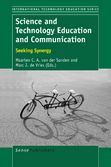
A Cross Disciplinary Embodiment: Exploring the Impacts of Embedding Science Communication Principles in a Collaborative Learning Space. Emma Weitkamp and Dawn Arnold in Science and Technology Education and Communication, Seeking Synergy. Maarten C. A. van der Sanden, Delft University of Technology, The Netherlands and Marc J. de Vries (Eds.) Delft University of Technology, The Netherlands.
We hope that you find our work interesting and insightful, keep an eye on this blog – next week we will highlight our publications around robots, robot ethics, ‘fun’ in science communication and theatre.
Details of all our publications to date can be found on the Science Communication Unit webpages.
Postgraduate Science Communication students get stuck in on ‘Science in Public Spaces’
Emma Weitkamp & Erik Stengler
September saw the lecturing staff at the Science Communication Unit welcoming our new MSc Science Communication and PgCert Practical Science Communication students to UWE and Bristol. It also sees the start of our refreshed programme offering, which includes significant changes and updates to two of our optional modules: Science in Public Spaces and Science on Air and On Screen.
The first three-day block of Science in Public Spaces (SiPS) marks the start of a diverse syllabus that seeks to draw together themes around face-to-face communication, whether that takes place in a what we might think of as traditional science communication spaces: museums, science centres and festivals or less conventional spaces, such as science comedy, theatre or guided trails. Teaching is pretty intense, so from Thursday, 29th September to Saturday, 1st October, students got stuck into topics ranging from the role of experiments and gadgets to inclusion and diversity.
Practical science fair
Thursday, 29th September saw the 13 SiPS students matched with researchers from the Faculty of Health and Applied Sciences. Students were introduced to cutting edge research and have been challenged to think about how this could be communicated to the public in a science fair setting. Each student will work with their researcher to create a hands-on activity which they will have the opportunity to deliver to the public at a science fair to be held during a University Open Day in the spring.
Towards the end of the three days a session on creativity generated intense discussion about how we might judge what creativity is through to practical techniques and tips we might use to stimulate creative thinking. The session included a word diamond (McFadzean, 2000), where groups considered how you might foster engagement and enjoyment amongst blind visitors to the Grand Canyon, how blind visitors could be involved in creating a sensory trail (for sighted people) at an arboretum or how to enable a local community to be involved in decision making around land use that involved ecosystem services trade-offs. Challenging topics that draw on learning from earlier in the week.
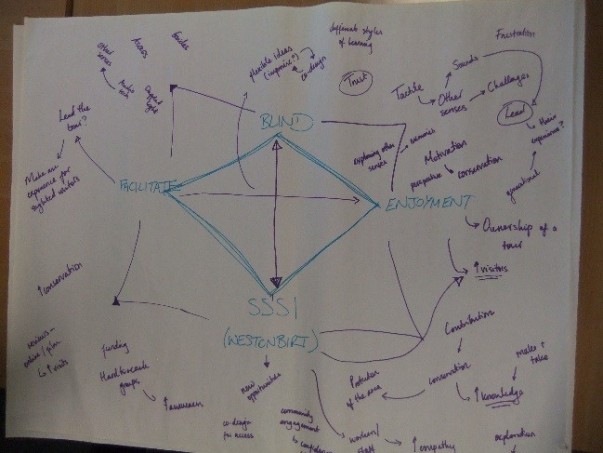
After a final session on connecting with audiences, students (and staff) were looking a little tired; three days of lectures, seminars and workshops is exhausting. We hope students left feeling challenged, excited and ready to start exploring this new world of science communication and public engagement and that they find ways to connect their studies with events and activities they enjoy in their leisure time – though that might not apply to the seminar reading!
Science in Public Spaces got off to an excellent start, thanks to the students for their engaged and thoughtful contributions in class. Up next is the Writing Science module, where Andy Ridgway, Emma Weitkamp and a host of visiting specialists will be introducing students to a wide range of journalistic techniques and theories. Then it will be the turn of the new Science on Air and on Screen where Malcolm Love will introduce students to techniques for broadcasting science whether on radio, TV or through the range of digital platforms now open to science communicators. Looks to be an exciting year!
McFadzean, E. (2000) Techniques to enhance creativity. Team Performance Management: An International Journal, 6 (3/4) pp. 62 – 72
Tackling the challenge of engaging with drought and frogs
SCU was well represented at the Bristol Festival of Nature (BFON) in June, with Associate Professor Emma Weitkamp manning the Drought Risk and You (DRY) stand on Saturday and MSc student Hannah Conduit showcasing her research with the Durrell Trust as part of UWE’s festival tent.
 Emma is exploring communication and engagement barriers and enablers related to drought and water scarcity within the DRY project. At BFON, Emma was interested to hear what visitors think about a set of cartoons produced as part of the project and whether these might be a tool to open conversations about water scarcity; climate change models suggest the UK will have wetter winters and drier summers, increasing the risk that we will have serious droughts. . In the southern UK, the most severe in living memory is the drought of ’76.
Emma is exploring communication and engagement barriers and enablers related to drought and water scarcity within the DRY project. At BFON, Emma was interested to hear what visitors think about a set of cartoons produced as part of the project and whether these might be a tool to open conversations about water scarcity; climate change models suggest the UK will have wetter winters and drier summers, increasing the risk that we will have serious droughts. . In the southern UK, the most severe in living memory is the drought of ’76.
Initial work within the DRY project highlights the challenges of engaging people with Drought. Unlike flooding which has immediate effects, drought has a slow onset and many not have immediate relevance to many people. Rain during BFON highlights the challenge – how do you engage people with drought when it’s raining?

Emma Weitkamp and DRY Project leader Lindsey McEwen at the DRY stand, Bristol Festival of Nature
Emma presented initial work on citizen science aspects of the DRY project at the Society for Risk Analysis meeting in Bath, 20th June, while Adam Corner, of Climate Outreach presented the project’s initial work on communication barriers.

Jeff Dawson with the project research tools
Frogs are not the cuddliest of species, so Hannah is tackling similar challenges through her research with the Durrell Trust. Amphibians have suffered a dramatic decline in numbers, and around 40% of all amphibian species are now considered to be under threat. But in a world of glamorous tigers and cuddly lemurs, it is sometimes hard for frogs to get a look in.
Hannah’s research focuses on one particular species of frog; second largest in the world and perhaps one of the most endangered. The ‘Mountain Chicken’ is aptly named for its meat; prised locally as a delicacy with taste and consistency similar to that of its feathery cousin.
With less than 100 individuals remaining in the wild and continued threat from disease, the Durrell Trust and UWE are working together to find more effective ways of communicating the plight of amphibians like the Mountain Chicken.
At BFON, Hannah and her Durrell supervisor, Jeff, along with a small group of volunteers talked with the public about the Mountain Chicken’s story, as well as showing them some of the methods used by scientists and researchers to monitor the remaining wild frogs. Scanning the stall’s microchipped frog plushies and swabbing them for a fungal disease called Chytrid proved to be the weekend’s most popular activities.

Erik Stengler, Hannah Conduit and Jeff Dawson, at the Saving the Mountain Chicken Frog stand, Bristol Festival of Nature
Research is currently ongoing for Hannah’s project, and will culminate in a handbook for use by the Mountain Chicken Recovery Programme in raising awareness and gathering interest amongst the public for the species.
Blog post written by Emma Weitkamp & Hannah Conduit
Communicating research: do we need to be more creative?
Clare Wilkinson and Emma Weitkamp are Associate Professors based at the Science Communication Unit, University of the West of England, Bristol.
A press release and tracking of the resultant media coverage, or a public talk, are relatively easy methods of public communication, which most researchers are comfortable adding to their pathways to impact, but what about those wanting to be a bit more adventurous or wishing to undertake public engagement right from the start to help shape research design or data collection? In our new book Creative Research Communication: Theory and Practice, we explore a range of emerging or non-traditional approaches that the research community is exploring for public communication and engagement; from collaboration with the arts, to digital storytelling and gaming, through to the use of comedy in locations like community spaces and festival sites.
By considering an array of different research communication opportunities, we argue that researchers may find compelling niches for both themselves and their research participants, to engage creatively alongside, or perhaps despite, increasing institutional agendas around engagement:
‘This is an era to channel creatively away from metrics or “one size fits all” and to engage in ways that work for you as an individual researcher in the context of your own disciplinary potential and desires, and that embrace and recognise the ways that people beyond the context of an organisation or university may creatively add to your research process as well as experience benefits of their own.’ (Wilkinson and Weitkamp, p.10)
We’re not suggesting in the book that all approaches to research communication need to be entirely new or novel, rather that there is a rich history of research communication which can be drawn on to develop effective, insightful and engaging approaches. Starting with a history of the field, and moving through chapters examining many tried and tested approaches, we offer the novice research communicator a set of tools and ideas via which they may build and advance their practice, often using more recent or contemporary techniques.
The book is peppered with case studies drawn from around the world; you can read up on how researchers are embedding art at CERN, using apps to allow people to experience their city in roman times via the Virtual Romans project, and supporting communities to tackle their local environmental worries through the Public Lab approach. Most chapters are supported by clear advice on practical aspects of research communication, for instance there are sections on how to utilise audience segmentation approaches, manage conflict and controversy, and principles to keep in mind when working with policymakers.
In writing the book we tried to keep a range of research areas firmly in view. As co-authors coming from two contrasting disciplines (originally working in sociology and biochemistry) we tried to consider a range of ways in which research communication can and may be relevant, and that for some researchers this may be at different points of the research journey:
‘From a research communication perspective, and particularly conversations around “impact”, there can be a tendency to focus on engagement after the fact, rather than before or during research. This neglects that whilst research has an impact on people, people also have an impact on research.’ (Wilkinson and Weitkamp, p.74)
And whilst we’ve titled the book Creative Research Communication, don’t be deceived that we see communication as only occurring in a one-directional manner. We envisage communication to include a variety of approaches, including those which embed people within research and engagement, from a participatory and dialogic perspective.
But of course impact is a very relevant issue for many research communicators at present and it can stimulate particular notions of the direction of any such impact. Recognising that, we have included a chapter on impact, which contains evaluation approaches which can be used to track the outcomes and impacts of your research communication activities on a range of participants including the researcher, as well as ways in which you might adapt evaluation to be more creative in itself. For us impact is also tied to ethical quandaries around the wider role of research communication. Is research communication about engendering change, learning, attitudes that align to our ways of thinking? Is it for all but really for some? Does research communication in and of itself need an ethical code of practice? We explore some of these themes within the book, as well as providing resources to equip researchers with techniques for ethical best practice in the design and evaluation of their research communication efforts.
In summary, we hope that the book provides a space for researchers to reflect on the ways they can engender creativity in their own research communication efforts, whilst recognising that taking such ‘risks’ requires support and encouragement:
‘Creativity can involve taking risks, having failures, pushing beyond one’s boundaries, and evaluation is one space in which to capture this, continuing to move the trajectory of research communication forwards without simply reducing research communication activities to those which might tick a box. Creative research communication is a recipe, concoction, a craft and a science, and it is up to each researcher to consider where their path lies on their own map of research communication.’ (Wilkinson and Weitkamp, p.266).
To answer our original question, do we need to be more creative in communicating research, not necessarily, but we hope the book provides a wide variety of reasons why you can.
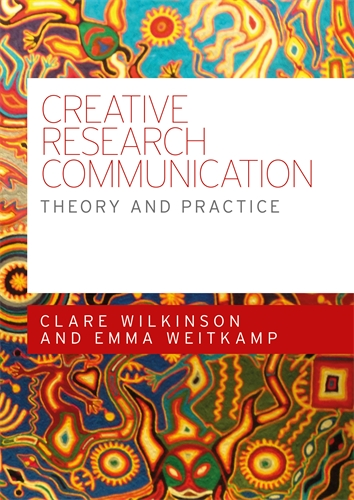
Science Writing Competition now open
It’s been a busy few weeks in the office getting ready for the UWE Bristol SCU Science Writing Competition 2016. We are looking for 700 words on “the next big thing in science”.
Entrants can be residents anywhere in the world, but must be non-professionals (professional journalists and anyone else who writes for money). All others, including scientists and bloggers, are welcome to apply. There are no residency restrictions, and we have separate categories for under 18s and over 18s. Closing date for applications is 24th June 2016. For full details, please see the SCU website.
We’re excited to have an impressive judging panel on board, who’ve prepared some excellent tips for new science writers. Fascinating stuff for newbies and old-timers alike.
The competition is run by UWE Bristol’s Science Communication Unit (SCU) in partnership with BBC Focus magazine and the Royal Institution.









